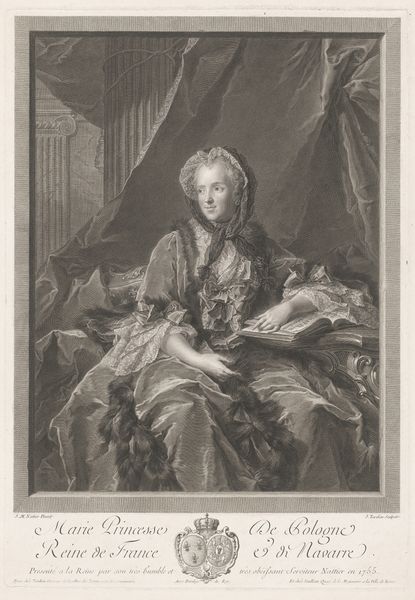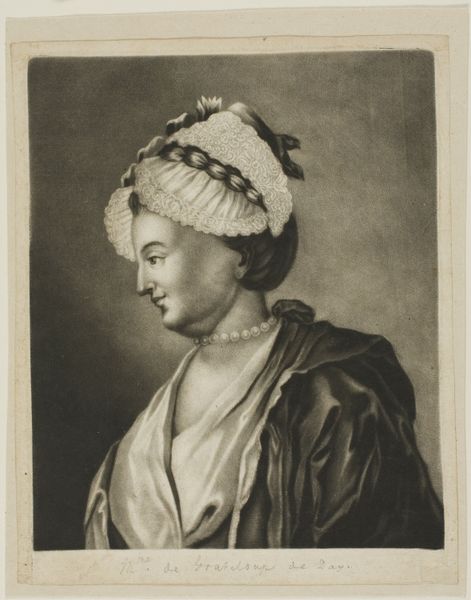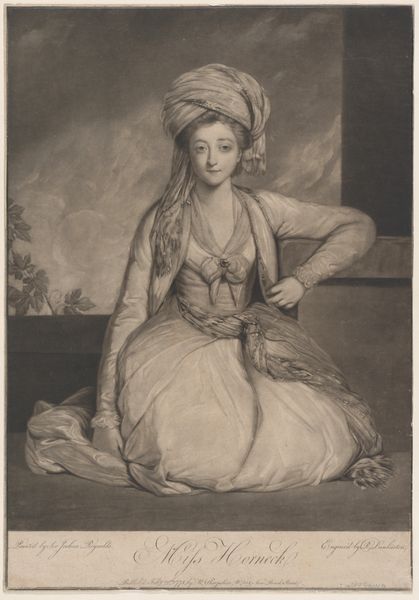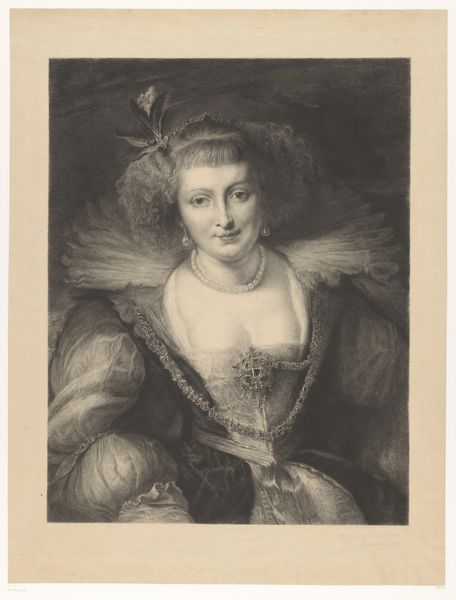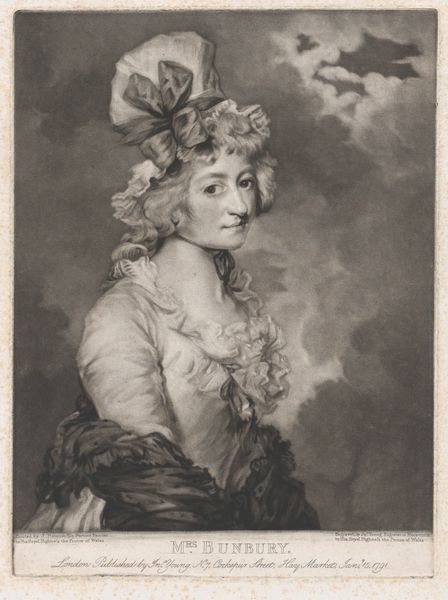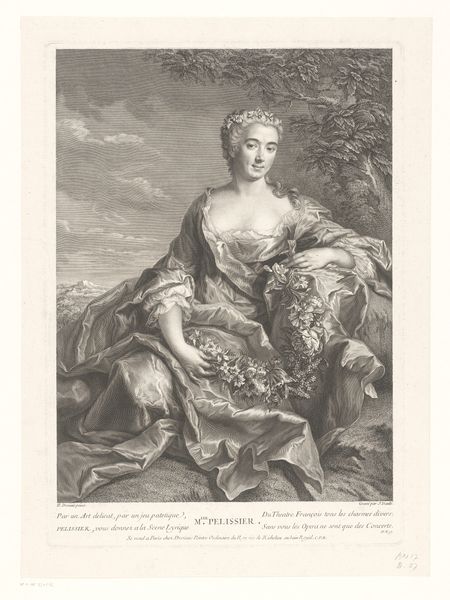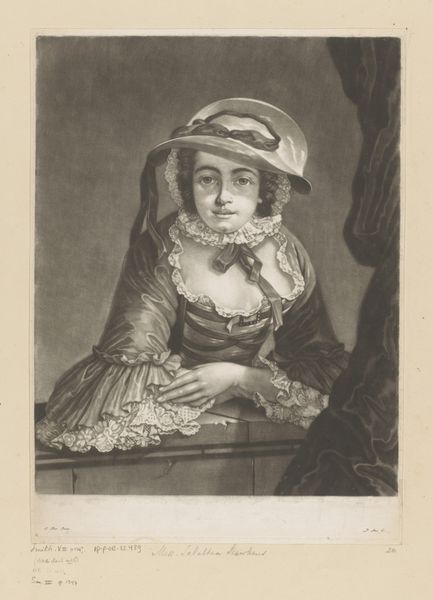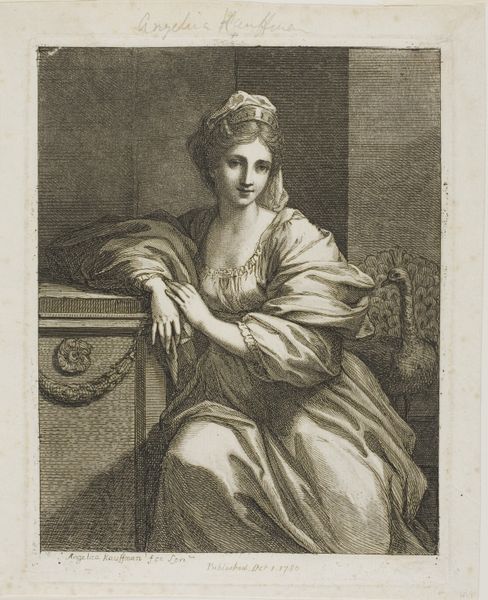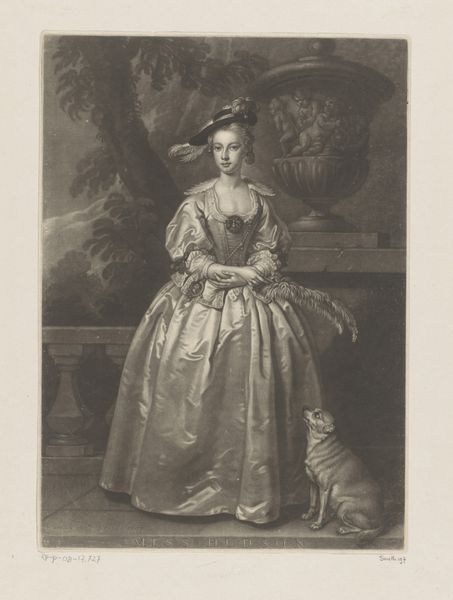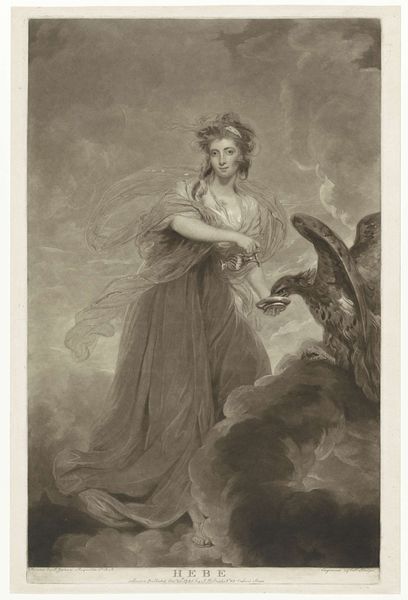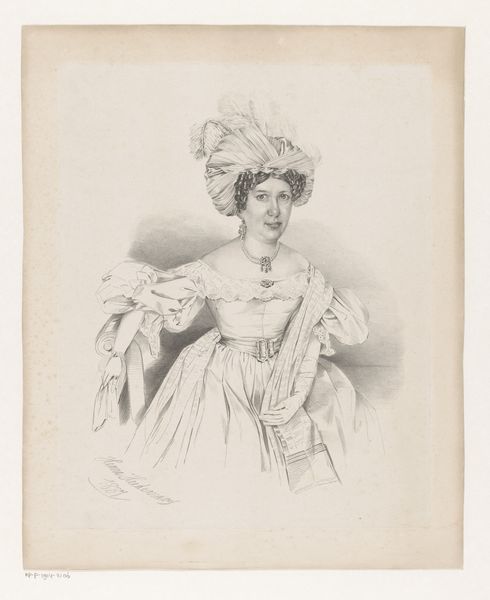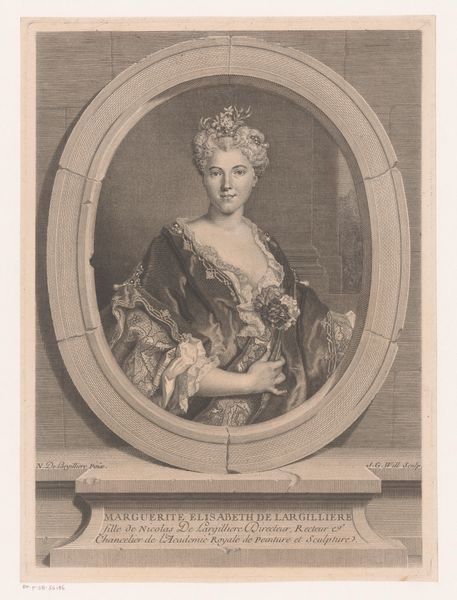
drawing, paper, charcoal, engraving
#
portrait
#
pencil drawn
#
drawing
#
neoclacissism
#
charcoal drawing
#
figuration
#
paper
#
pencil drawing
#
charcoal
#
charcoal
#
engraving
#
watercolor
Dimensions: height 404 mm, width 292 mm
Copyright: Rijks Museum: Open Domain
Curator: This is "Portrait of Anne Goddard-Williams Hope," a charcoal and chalk drawing done in 1788 by Charles Howard Hodges, here on display at the Rijksmuseum. Editor: It gives me such a melancholic feeling! It's like looking through a faded photograph, a glimpse into a life, suspended and so very…still. I think it's because her gaze is averted. Curator: Hodges was working during a time of shifting class structures and ideas of nationhood. The neoclassical style embraced ideas from antiquity; however, a work such as this also demonstrates an emerging idealization of domestic life and, for women, intellectual interests, particularly as Hope, belonging to an elite merchant family, sits calmly outside. Editor: Right? So serene! Although her elaborate bonnet sort of contradicts that calm, doesn't it? There’s something funny to me about that huge bonnet coupled with her subdued demeanor, maybe a slight jab at status anxiety through fashion. Almost like, "Yes, I'm refined but don't forget my hat!” Curator: Possibly. Think of her location: in a garden next to a vase that resembles an ancient Grecian urn, which alludes to taste, travel, and wealth. It reinforces her social standing. Amsterdam’s mercantile elite like Hope asserted their dominance not only through economics but by performing the trappings of power visually. Editor: Hmm, I get that, the visual cues of status. But I also just keep picturing her fumbling around in that ridiculous hat! Maybe art is meant to humanize the powerful or even take them down a peg, who knows? Hodges captures an individual with all these markers, but the light and shadows remind me there’s some level of inner life he’s implying, some psychological depth underneath. Curator: The artist might certainly have been implying her individuality beyond social definitions. She's placed near this grand vase, and far off, what is supposed to represent a sweeping vista. But Hope herself remains at the front; she commands your attention and perhaps invites interrogation and interest beyond what simply meets the eye. Editor: Exactly! Thanks for putting that into such perspective; I am certainly seeing it in a new way now. What started off as something quietly sad has so much depth. Curator: Agreed. Hopefully, our brief discussion sheds further light on how cultural narratives shaped even subtle artwork of the era.
Comments
No comments
Be the first to comment and join the conversation on the ultimate creative platform.
